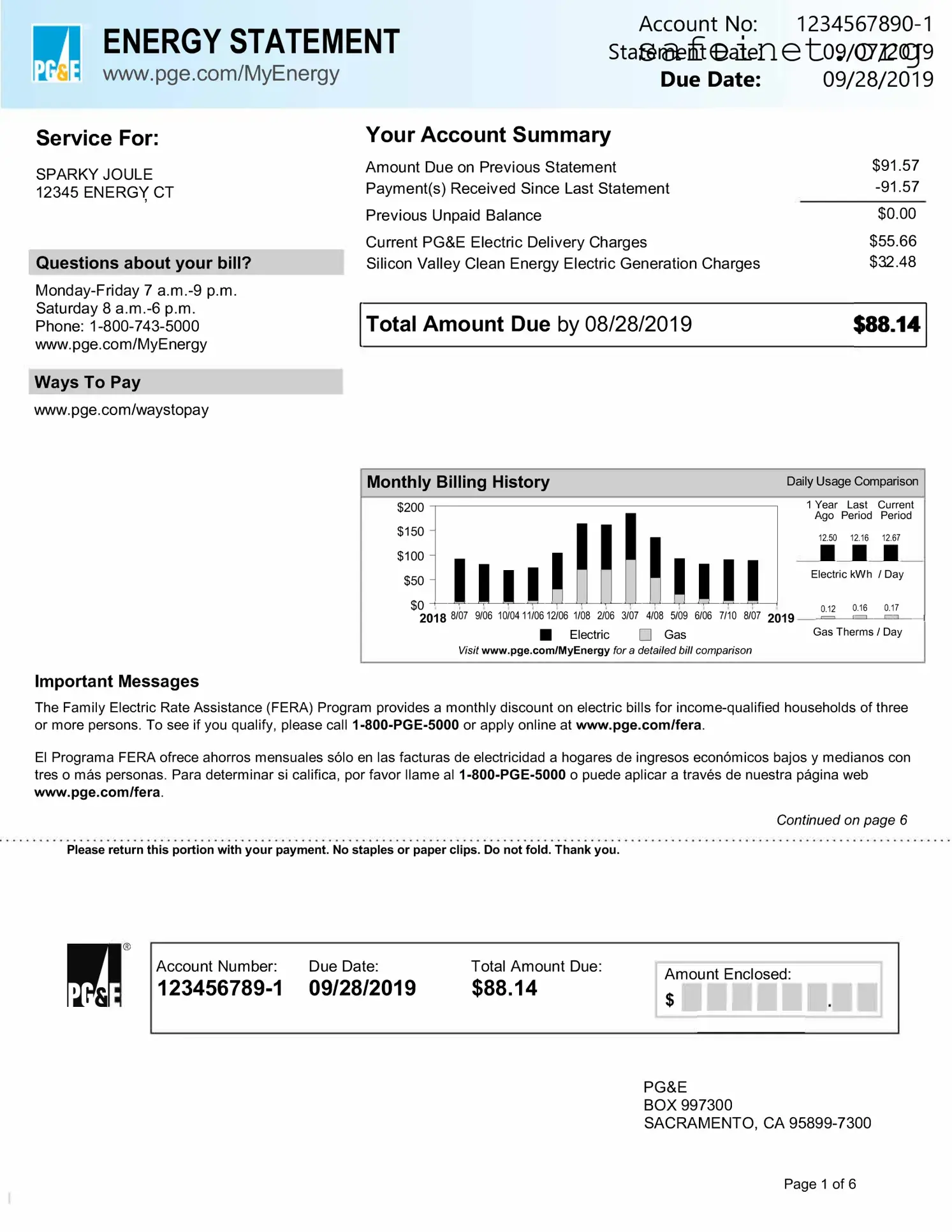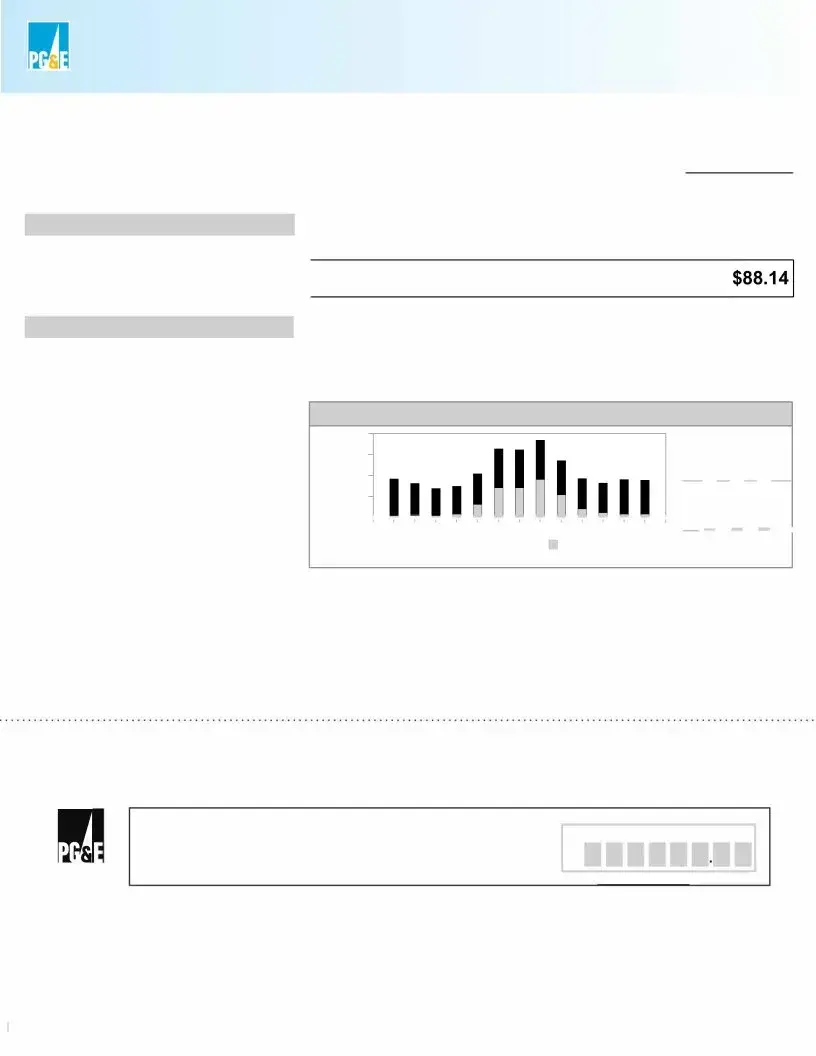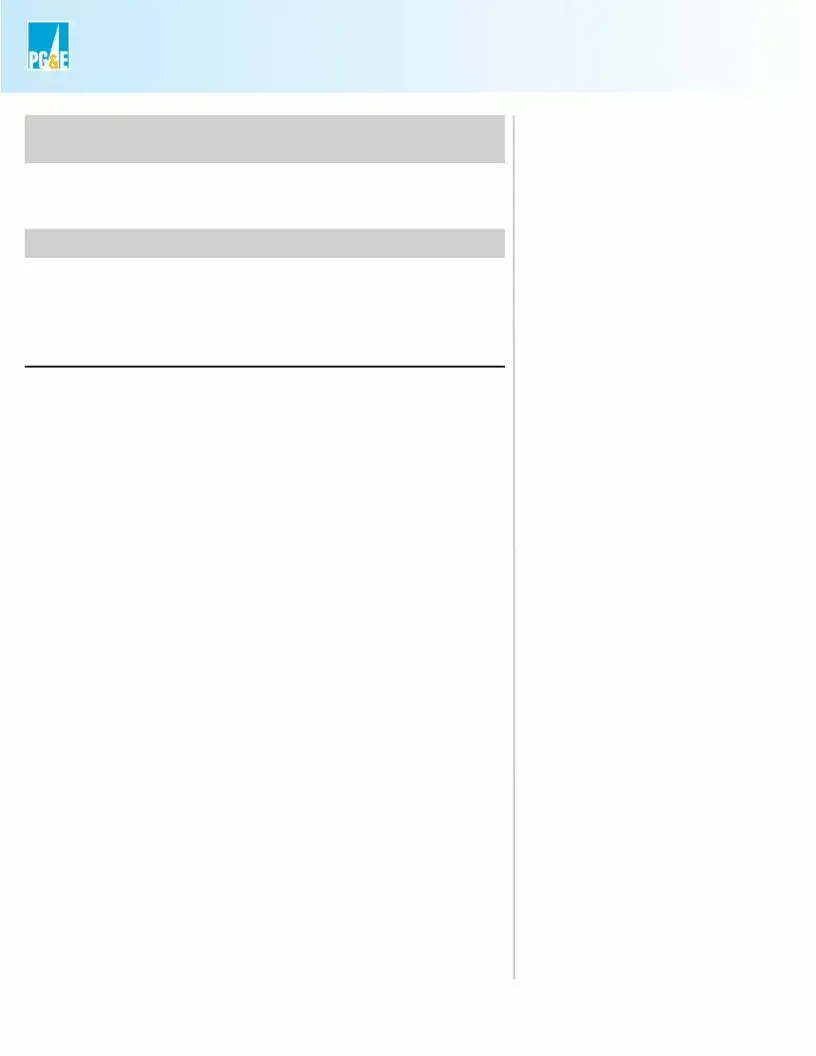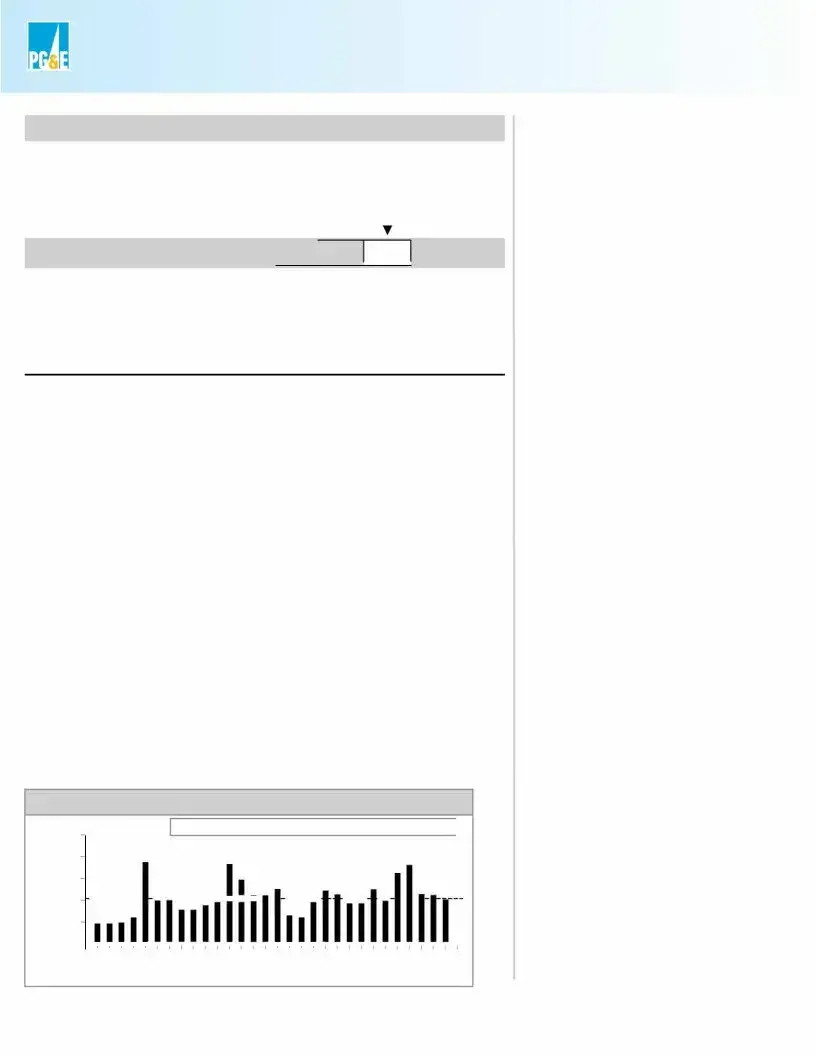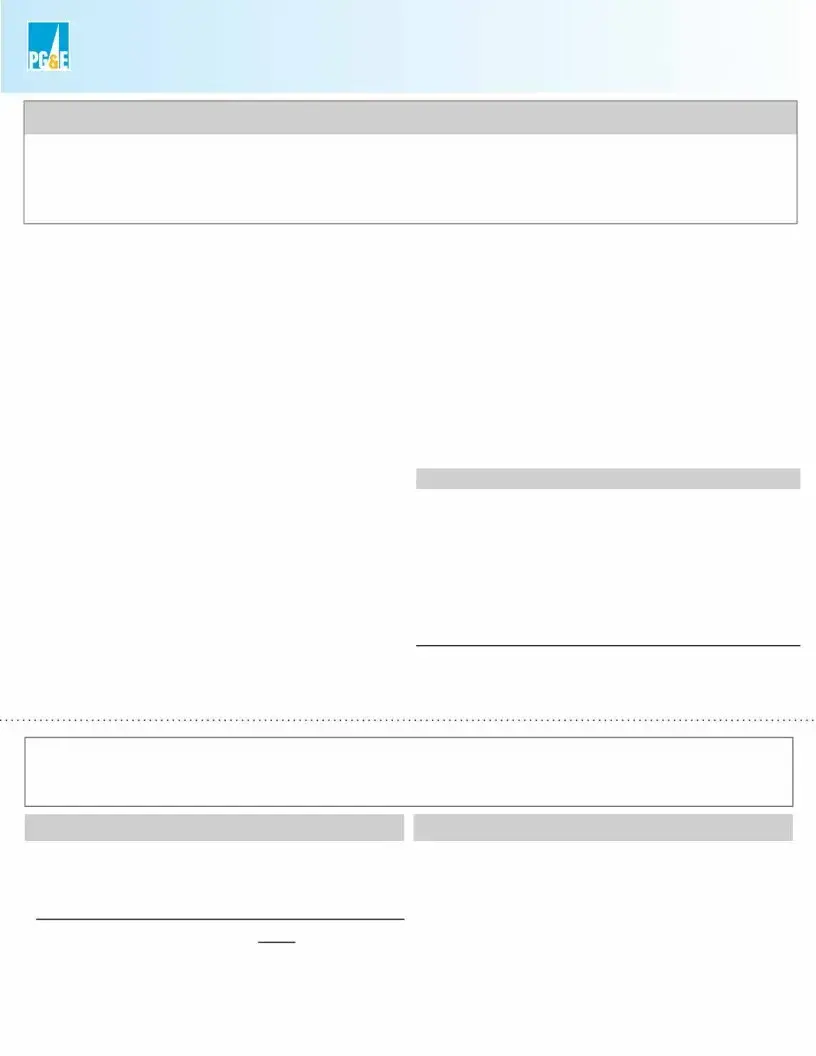The Utility Bill form is often compared to a Lease Agreement because both documents establish the terms of service for residential spaces. A Lease Agreement outlines the rental conditions between a tenant and a landlord. Similarly, a Utility Bill shows the charges for services provided, which are essential for a tenant's daily living. While the Lease Agreement contains details about the duration of occupancy, rent, and the responsibilities of both parties, the Utility Bill focuses specifically on the costs associated with utilities like water, electricity, and gas, which are typically tied to the property outlined in the lease.
Another document similar to the Utility Bill is the Bank Statement. Both documents serve as financial records. A Bank Statement reflects an account holder's financial activity over a specific period, itemizing deposits and withdrawals. Likewise, a Utility Bill itemizes the usage of services over a billing cycle. Each helps individuals track expenses and manage budgets. They both provide crucial information for understanding personal finances and may play a role in loan applications or financial assessments.
Invoices are also closely related to Utility Bills. An invoice typically lists goods or services provided, along with the amounts owed. Utility Bills, in contrast, itemize utility services consumed, detailing usage along with the corresponding charges. Both documents facilitate the payment process, prompting consumers to fulfill their financial obligations. They serve as official requests for payment and can be referenced for any disputes or clarifications on the services rendered.
Similarly, Pay Stubs function in a comparable manner. While Pay Stubs detail an employee's earnings, taxes withheld, and deductions, Utility Bills break down costs associated with necessary services. Both serve as important financial documents for personal record-keeping. They provide insights into regular expenses, helping individuals better understand their financial standing and manage their budget effectively.
Property Tax Bills are analogous to Utility Bills in that they both outline financial obligations related to a property. Property Tax Bills indicate the amount owed to the local government based on the assessed value of the property. In comparison, Utility Bills highlight the costs of essential services used within that property. While they address different types of charges, both are critical for homeowners and renters alike, and failure to pay either can lead to serious financial repercussions.
Lastly, Insurance Premium Statements share similarities with Utility Bills by outlining payment responsibilities for services. Insurance Premium Statements detail payments made for coverage, whether for health, auto, or homeowners insurance. Utility Bills, on the other hand, specify charges for utilities essential to everyday living. Both documents are recurring financial obligations, usually sent on a regular basis, aiding individuals in maintaining their financial planning and ensuring continuity of essential services.
